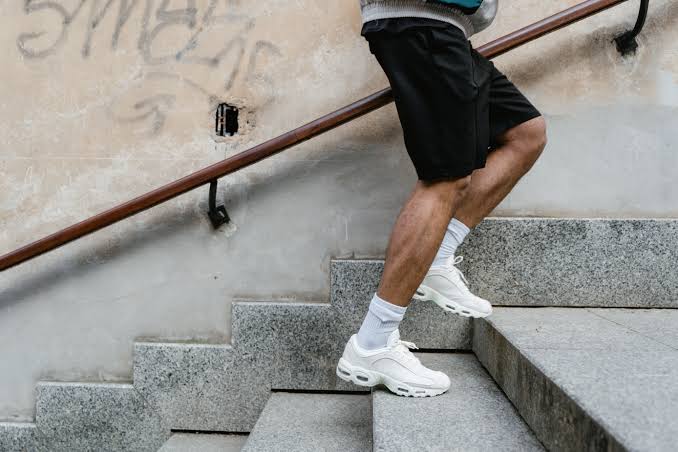How To Start Hiking When Out Of Shape
If you find yourself feeling a bit out of shape for hiking but still you want to do it, Congrats! You’re already halfway there.
Deciding to go on a hiking adventure while out of shape means you’ve conquered more than half of the challenges with your motivation and dedication.
Now, all that’s left is to hit the trails. You will automatically get in better shape over time. It’s all about persistence and hard work.

Some people make regular exercise a part of their lives that allows them to handle physically demanding activities with ease. For them, swimming, hiking, or running is like second nature.
They’ve built up endurance and strength over time which makes these activities feel like a normal thing.
But often this is quite a tough and demotivating phase for someone who hasn’t engaged in regular physical activity, but still decides to tackle a challenging endeavor like hiking.
Now, let’s focus on how to start hiking when out of shape, regardless of their current fitness level, who wants to go on a hiking journey.
How To Start Hiking When Out Of Shape
The journey to becoming fit and ready for hiking begins with motivation and small steps. Start with regular walks to build stamina and strengthen leg muscles. Gradually increase the duration and intensity of your walks to mimic the demands of hiking.
Choose a trail that matches your current fitness level. Start with shorter and less challenging routes to gain confidence and gradually progress to more demanding hikes.
While doing hiking also incorporate exercises that target the major muscle groups used during hiking, such as the quadriceps, hamstrings, and calves.
Strength training exercises, like squats and lunges, are quite beneficial in this regard. Try these activities in your weekly routine and gradually increase their duration and intensity.
But while doing all these things don’t get demotivated and stay consistent. You’ll do it when you get in shape for hiking.
Walking
If you’re feeling a bit out of shape, don’t worry. We all start somewhere, and walking is an excellent way to begin your fitness journey.
The beauty of this approach is that it’s gentle on your joints, making it accessible to almost anyone. It’s not about racing; it’s about picking up the pace a bit.

You’ll notice your heart rate increases, and you start to break a sweat – that’s a good sign. This uptick in intensity helps you burn more calories and strengthens your muscles.
It’s a fantastic way to prepare your body for more challenging adventures like hiking or even just to elevate your overall fitness level. It’s like giving your body a taste of the hiking experience without straying too far from your daily routine.
Stairs Climbing
Climbing stairs is a full-body workout, but let’s focus on two crucial benefits: leg strength and cardiovascular endurance. When you hike, your legs play a starring role.
They power you up steep inclines, stabilize you on rocky terrain, and support you on the descent. Building leg strength is essential for tackling these challenges without feeling like your legs are turning to jelly.

Stair climbing engages your leg muscles, including your quadriceps, hamstrings, calves, and glutes. These muscles become stronger and more resilient with each step you take.
Starting with just a few flights of stairs and gradually increasing your effort over time will help you build that leg strength at a pace that suits your current fitness level.
Remember, the goal here is not to become an Olympic stair climber but to prepare yourself for the joys of hiking. As you gain confidence and strength, gradually increase the number of flights or the time you spend climbing. You can use a timer or count the number of times you go up and down.
Aerobic Exercises
Adding aerobic workouts into your routine means you’re training your cardiovascular system to perform optimally. Hiking is a long and sometimes strenuous activity.
Building cardiovascular endurance will help you maintain energy throughout your hike, reducing the chances of feeling tired too soon.
It also enhances your recovery time, so you won’t be as sore the day after your adventure. Let’s discuss some of the best exercises you can incorporate into your routine.
Cycling
Cycling is an excellent choice, whether you’re riding a stationary bike or pedaling through your neighborhood.

It’s easy to control the intensity, and you can start at your own pace. As you gain strength and stamina, you can increase the resistance or go for longer rides.
Swimming
Swimming is another fantastic option. It’s a full-body workout that’s easy on the joints, making it ideal for those who may have knee or hip issues.

The resistance of the water provides a great challenge, and you can adjust your speed and strokes as needed.
Low impact Exercises
Low-impact aerobics are specifically designed to be gentle on your joints while still providing an effective cardiovascular workout.
These classes often involve movements like stepping, dancing, or even marching in place. They’re a fun way to get your heart rate up without the high-impact stress.
It’s essential to start gradually, especially if you’re not used to regular exercise. Begin with 20-30 minutes of aerobic activity three to four times a week. This will help your body adapt without overexerting yourself.
As you progress, aim to increase the duration and intensity of your workouts. Gradually work your way up to 45-60 minutes per session.
These exercises are especially beneficial when you’re out of shape for hiking. They target the muscle groups that play a significant role in your hiking performance.
Incorporate them into your fitness routine, and you’ll be better prepared to take on the challenges of the great outdoors.
Planks
Planks are an excellent way to strengthen your core muscles. To begin, get into a push-up position on your forearms and toes. Your body should form a straight line from head to heels.

Hold this position for 20-30 seconds, and as you progress, gradually increase the duration. This exercise helps stabilize your core, which is crucial for maintaining balance and stability on uneven hiking trails. If you are out of shape doing this exercise with consistency will do a lot of improvement.
Leg raises
Leg raises are fantastic for working on your leg and lower abdominal muscles.

Start by lying on your back with your arms by your sides. Lift your legs off the ground while keeping them straight, and then lower them back down without letting them touch the ground. Begin with 2-3 sets of 10-12 repetitions.
Leg raises help to improve your leg strength, which is vital for tackling uphill and downhill sections during a hike.


